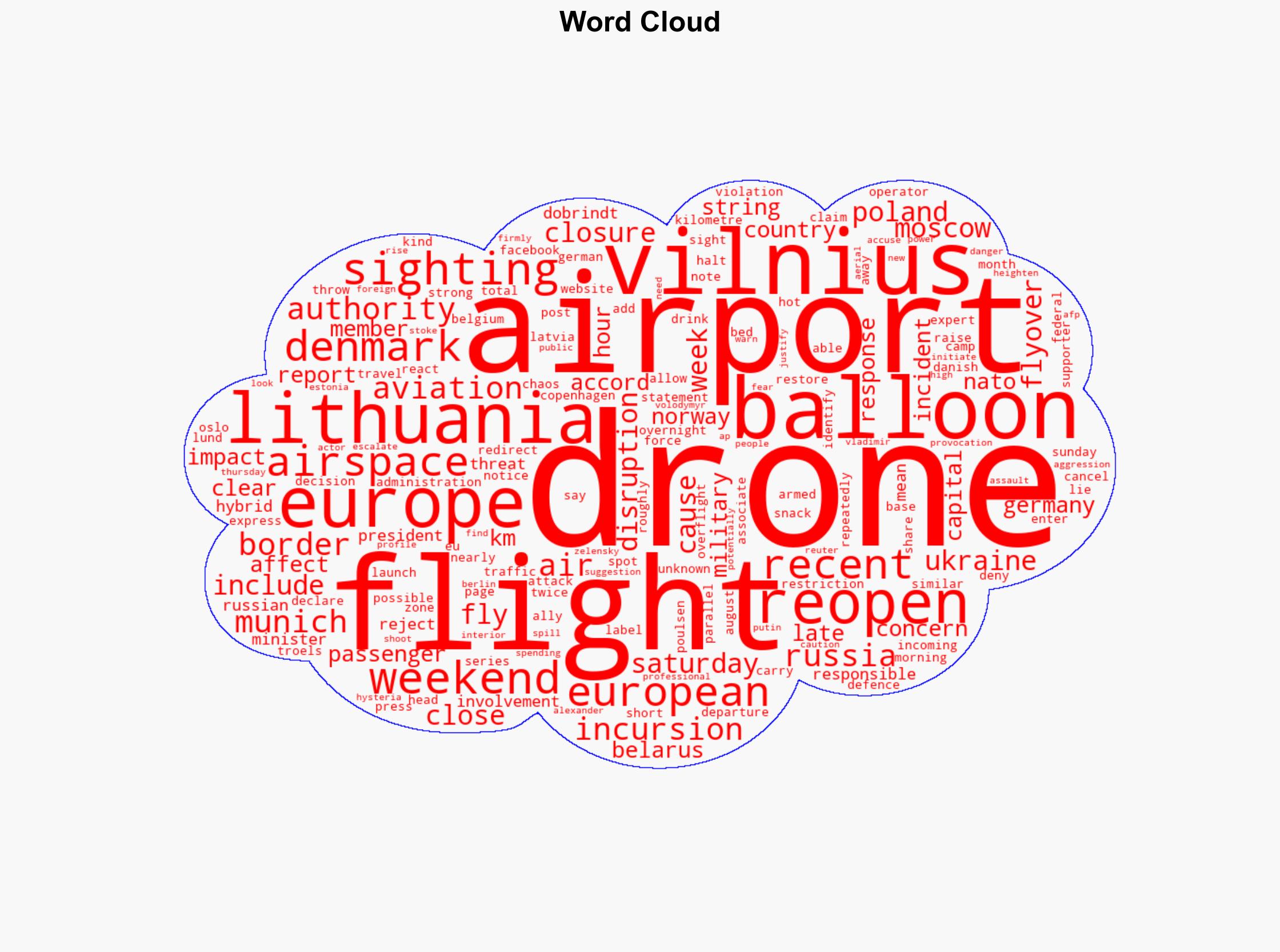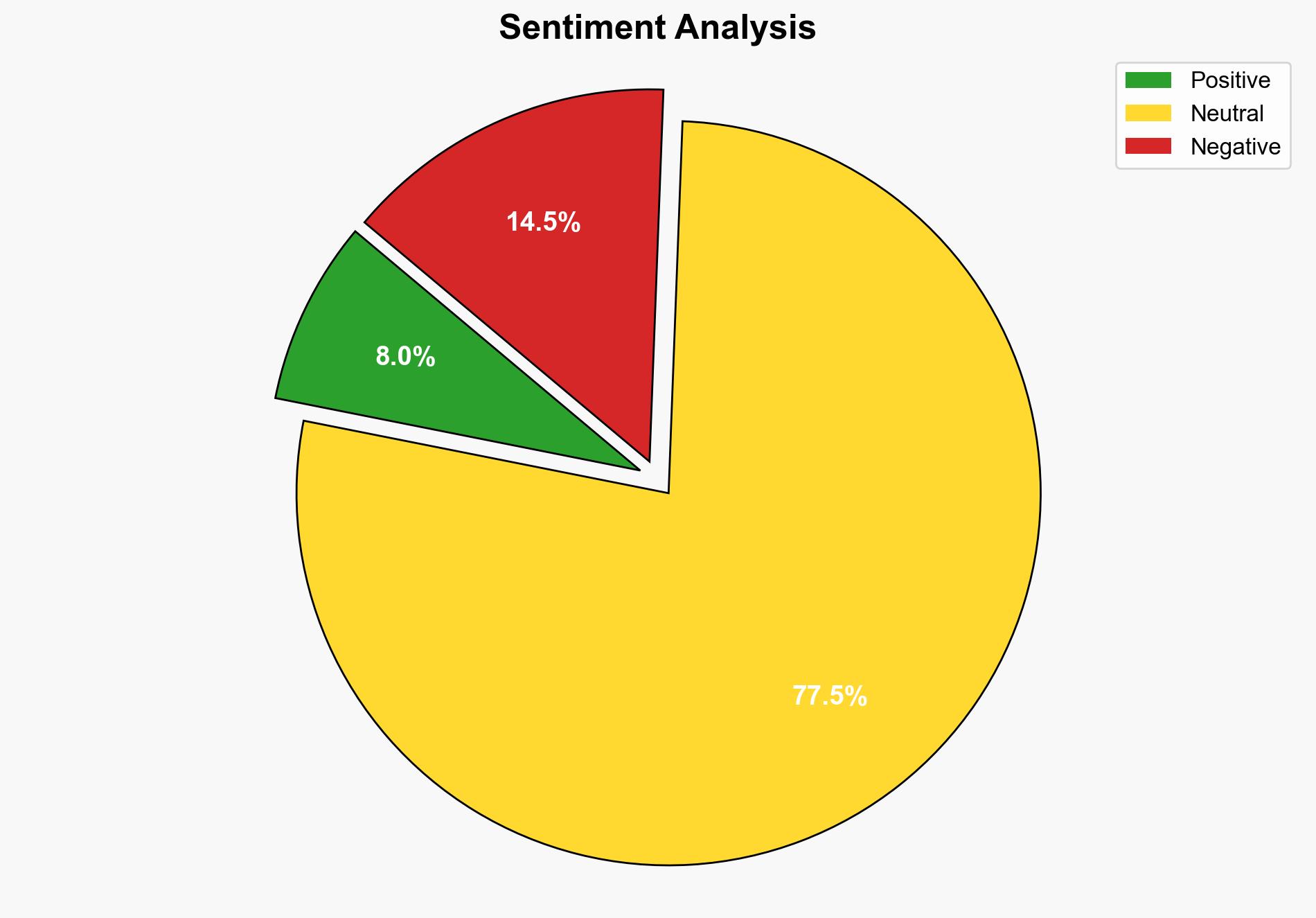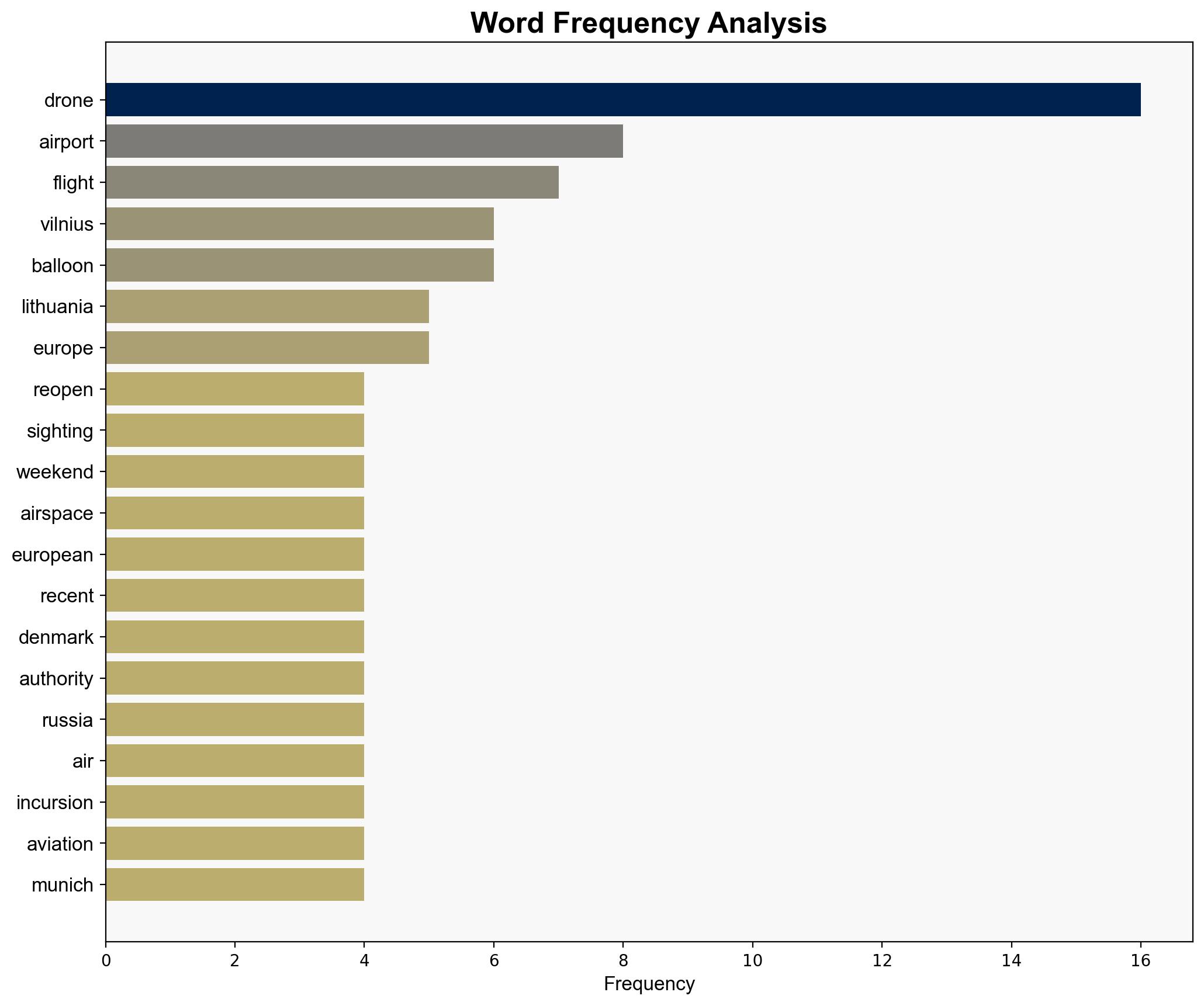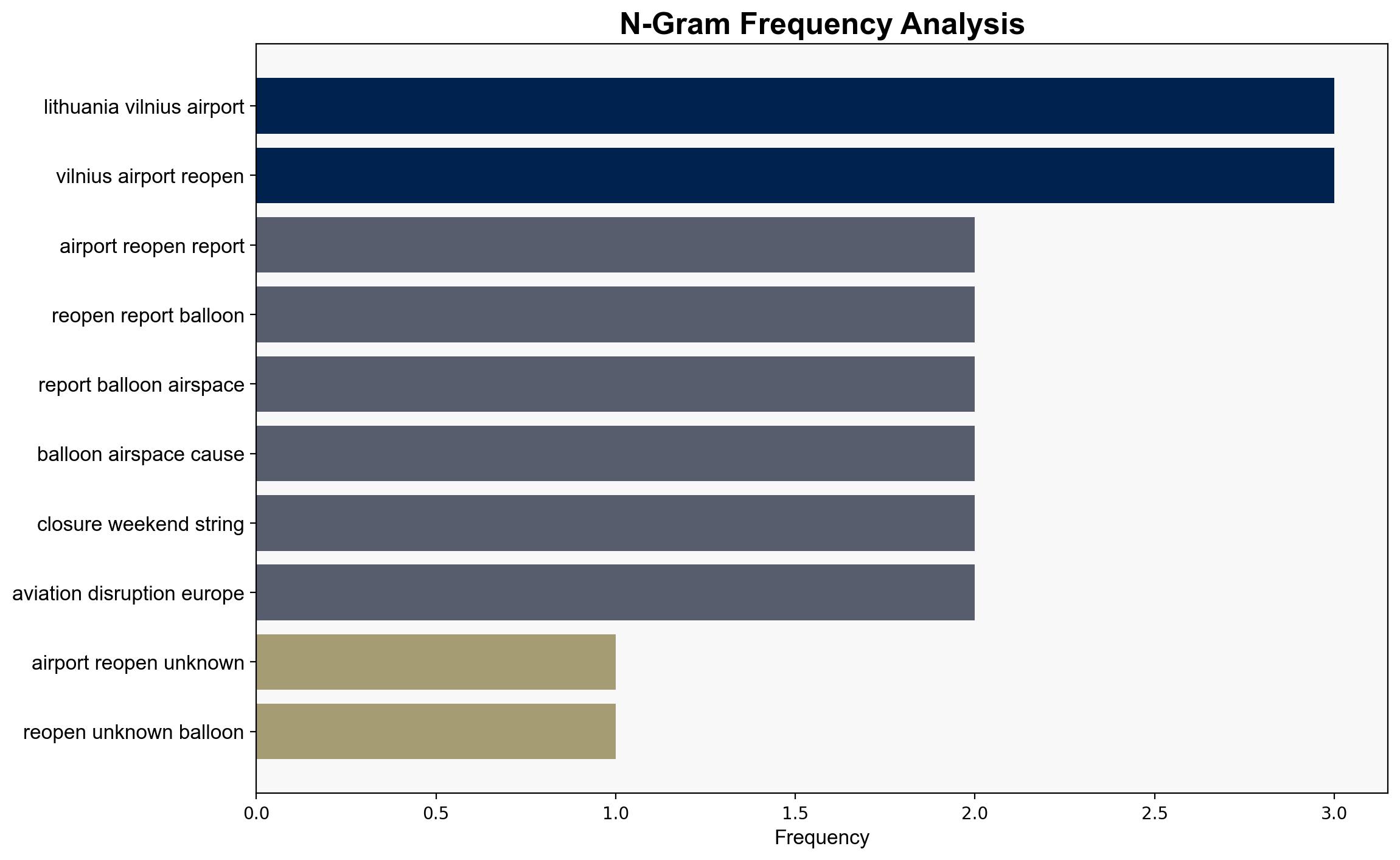Lithuanian airport latest to halt flights due to ‘balloons’ in airspace – ABC News (AU)
Published on: 2025-10-05
Intelligence Report: Lithuanian airport latest to halt flights due to ‘balloons’ in airspace – ABC News (AU)
1. BLUF (Bottom Line Up Front)
The most supported hypothesis is that the balloon and drone sightings are part of a coordinated effort to test and potentially disrupt European airspace security, likely involving state or non-state actors. Confidence level is moderate due to limited direct evidence. Recommended action includes enhancing airspace surveillance and coordination among European countries to mitigate potential threats.
2. Competing Hypotheses
1. **Hypothesis A**: The balloon and drone sightings are part of a coordinated effort by a foreign power, possibly Russia, to test European airspace defenses and create disruptions.
2. **Hypothesis B**: The sightings are isolated incidents caused by non-state actors or hobbyists, with no coordinated intent to disrupt airspace security.
Using the Analysis of Competing Hypotheses (ACH) 2.0, Hypothesis A is better supported due to the pattern of incidents across multiple countries and the geopolitical context involving Russia and NATO. Hypothesis B lacks support due to the scale and timing of the incidents.
3. Key Assumptions and Red Flags
– **Assumptions**: Hypothesis A assumes a level of coordination and intent by a foreign power, while Hypothesis B assumes random, uncoordinated actions.
– **Red Flags**: The lack of concrete evidence directly linking the incidents to state actors is a significant red flag. Additionally, the potential for cognitive bias in assuming Russian involvement due to existing geopolitical tensions.
– **Inconsistent Data**: The absence of clear identification of the balloons and drones involved raises questions about the effectiveness of current surveillance measures.
4. Implications and Strategic Risks
– **Geopolitical**: If linked to a state actor, these incidents could escalate tensions between NATO and Russia, potentially leading to increased military readiness or conflict.
– **Economic**: Continued disruptions in air travel could have significant economic impacts on European countries, affecting trade and tourism.
– **Psychological**: Repeated incidents may erode public confidence in air travel safety and government ability to protect national airspace.
5. Recommendations and Outlook
- Enhance airspace surveillance and intelligence-sharing among European countries to quickly identify and respond to aerial incursions.
- Engage in diplomatic channels to address potential state actor involvement and reduce tensions.
- Scenario Projections:
- **Best Case**: Improved surveillance and diplomatic efforts lead to a reduction in incidents and stabilization of regional tensions.
- **Worst Case**: Continued incursions lead to a military confrontation between NATO and Russia.
- **Most Likely**: Increased surveillance and coordination mitigate immediate threats, but underlying tensions persist.
6. Key Individuals and Entities
– Volodymyr Zelensky
– Alexander Dobrindt
– Troels Lund Poulsen
– Vladimir Putin
7. Thematic Tags
national security threats, cybersecurity, counter-terrorism, regional focus





